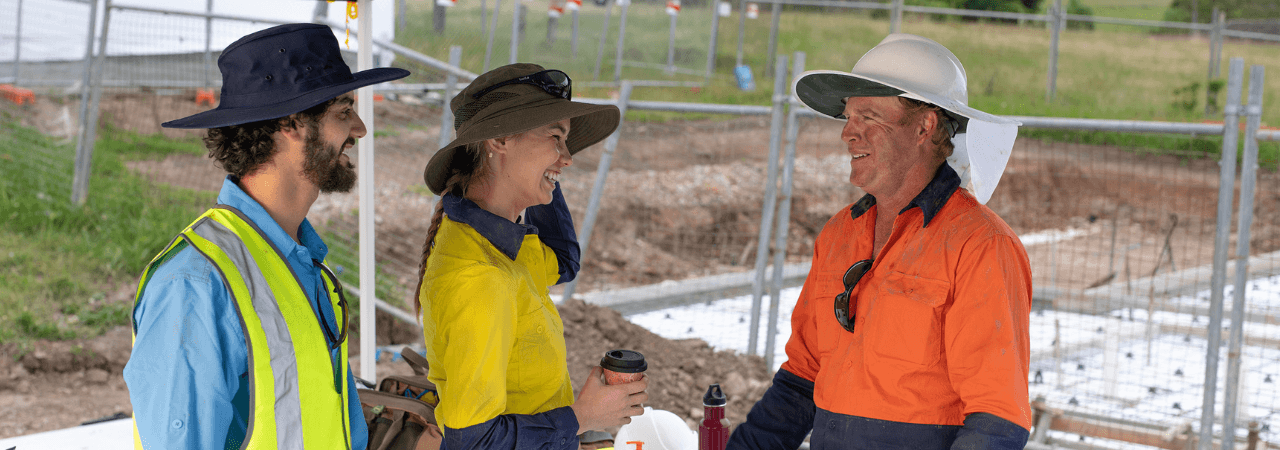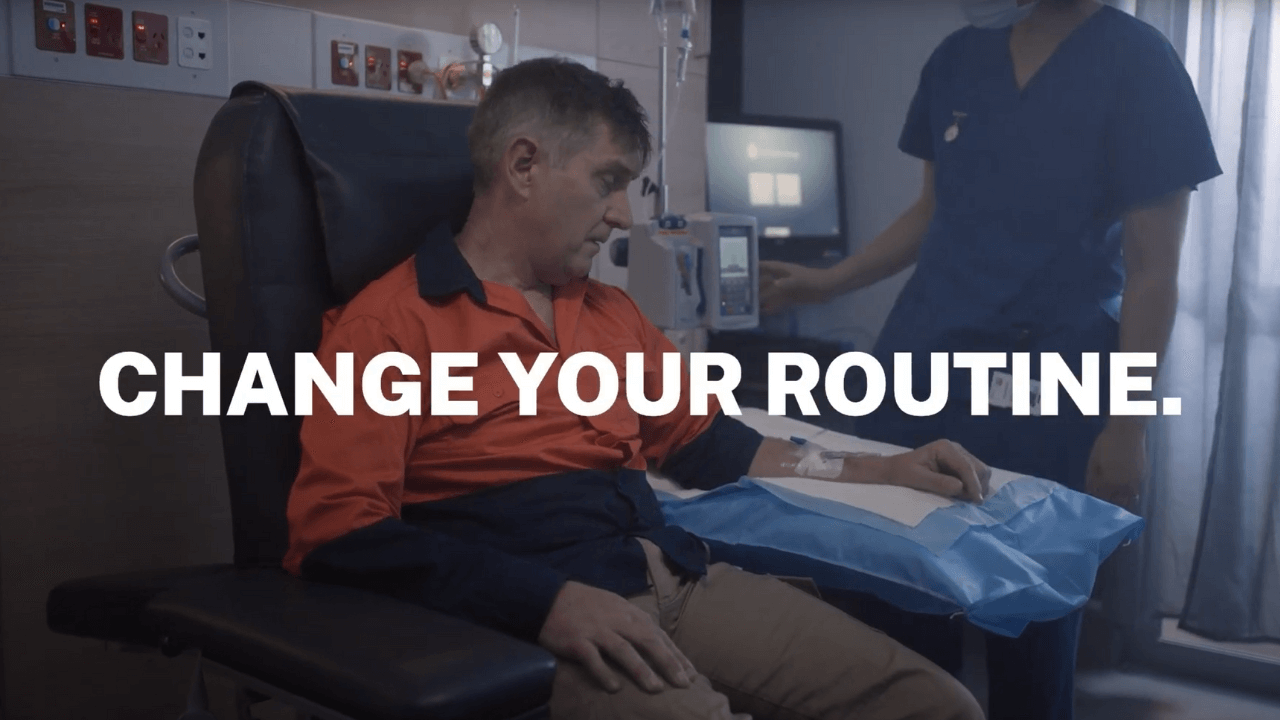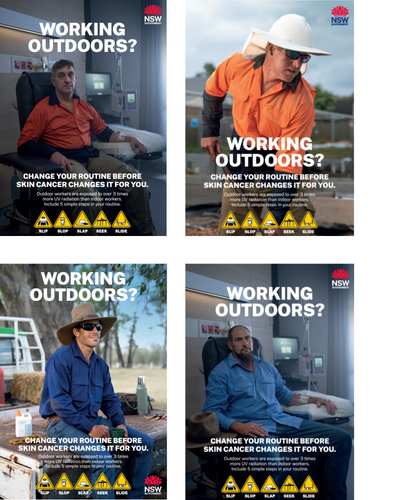‘Change Your Routine’ Skin Cancer Prevention Campaign Toolkit
Jump to:
Campaign overview
Cancer Institute NSW's ‘Change Your Routine’ campaign uses a combination of hard-hitting and supportive creative assets. The campaign aims to increase sun protection behaviours among outdoor workers to reduce their lifetime risk of developing skin cancer. It also urges outdoor workers to change their routine before skin cancer changes it for them by taking sun and UV radiation protection seriously.
The campaign is live from April to June 2023 and is being delivered across social media (Facebook, Instagram), YouTube and radio with a supporting website and resources available for download.
Watch the 'Change Your Routine' campaign video
Why we need a campaign
Overexposure to UV radiation is estimated to cause over 95 per cent of skin cancers in Australia.[1] Outdoor workers are exposed to over 3 times more UV radiation than indoor workers,[2,3] putting them at higher risk of skin cancers that can’t simply be cut out.
Fortunately, primary prevention behaviours that include seeking or setting up shade throughout the day, wearing protective clothing, a broad brimmed hat and sunglasses combined with SPF50+ sunscreen every 2 hours are highly effective in reducing the risk of developing skin cancer.
UV radiation is a major workplace hazard for outdoor workers, so a campaign is needed to encourage this group to make these life-saving behaviours part of their daily routine.[4]
The campaign also highlights that employers have a duty of care to protect their workers from UV radiation and skin cancer.

Campaign audience
All outdoor workers are at risk of skin cancer as they are exposed to higher rates of UV radiation than the general population. The campaign targets outdoor workers from agriculture and construction sectors in NSW with a primary focus on men over 40 years and their employers.
Men 40 years and over are 2.5 times more likely to die from melanoma than women of the same age.[5]
Key campaign messages
Outdoor workers are exposed to over 3 times more UV radiation than indoor workers.
Men 40 years and over are 2.5 times more likely to die from melanoma than women of the same age.
Reducing UV radiation exposure is the most effective way to prevent skin cancer.
Seek and set up shade, wear protective clothing, a wide-brimmed hat, sunglasses and SPF50+ sunscreen.
UV radiation is a major workplace hazard.
Employers have a duty of care to protect their workers from UV radiation and skin cancer.
Campaign materials
A range of campaign materials are available to use to support the campaign throughout the year as UV radiation is high (3+) from August to May.
The ‘Change Your Routine’ campaign combines a hard-hitting video that warns all outdoor workers about the seriousness of skin cancer with supportive resources that model how, when and where to protect their skin in the workplace.
The audience is directed to the 'Change Your Routine' campaign page for more information on how to protect workers from UV radiation.
Further information
- For further information about the campaign and preventing skin cancer, please visit https://www.cancer.nsw.gov.au/outdoor-workers for supporting resources and links.
- You can also contact us directly at CINSW-SkinCancerPrevention@health.nsw.gov.au.
1. Arnold M et al. 2018. Global burden of cutaneous melanoma attributable to ultraviolet radiation in 2012. Int J Cancer. Sep 15;143
2. Gies, P. & Wright, J. (2003). Measured solar ultraviolet radiation exposures of outdoor workers in Queensland in the Building and Construction Industry. Photochemistry and Photobiology, 78(4), 342-348. https://pubmed.ncbi.nlm.nih.gov/14626661/
3. Kimlin, M.G., Parisi, A.V. & Wong, J.C.F. (1998). Quantification of personal solar UV exposure of outdoor workers, indoor workers and adolescents at two locations in Southeast Queensland. Photodermatology, Photoimmunology & Photomedicine, 14, 7-1. https://pubmed.ncbi.nlm.nih.gov/9582080/
4. Liew, A.Y. & Cust, A.E. (2021). Changes in sun protection behaviours, sun exposure and shade availability among adults, children and adolescents in New South Wales, 2003–to2016. Aust N Z J Public Health, 45(5):462–to468.
5. Cancer Institute NSW. 2016. Melanoma cancer incidence and mortality (sourced from the NSW Cancer Registry). Available at https://www.cancer.nsw.gov.au/data-research/access-our-data/cancer-statistics-nsw#//analysis/incidence/ (accessed 9 September 2019).



